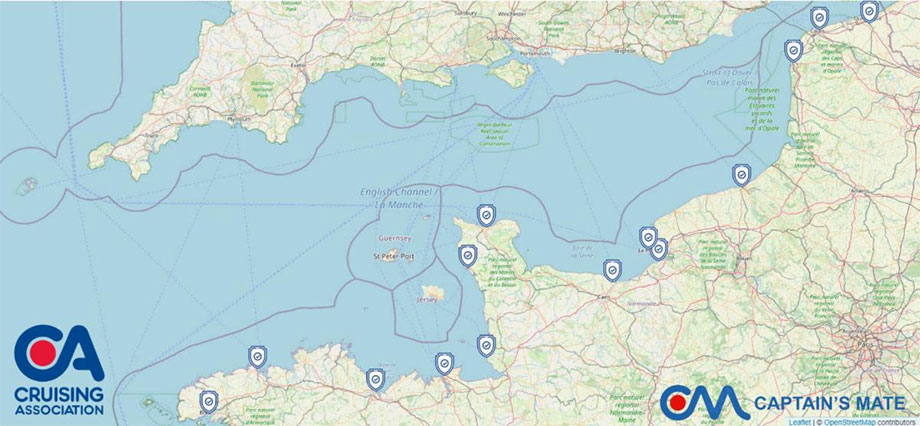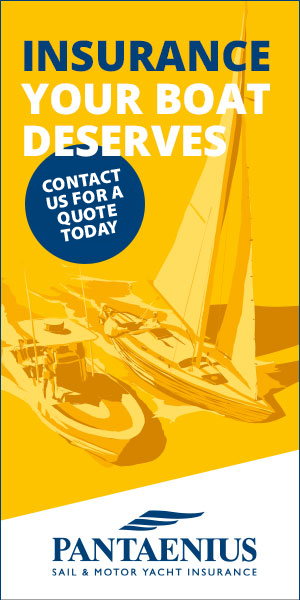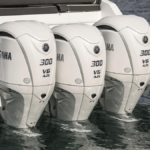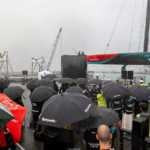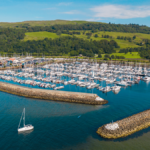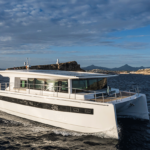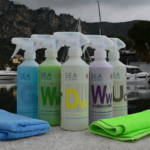With the 2022 cruising season upon us and the pandemic restrictions eased for travel, the appeal of crossing the channel to France is attractive for many UK based sail and motor cruisers.
France has always welcomed foreign sailors, although Britain leaving the EU introduced a more formal process to arrival and departure requirements. The Cruising Association has shared an update on the changes since early 2021, the current arrival and departure process, and expectations for the future.
After the end of the Brexit transition period on 31 December 2020, the process for a boat with non-EU citizens arriving from outside of the EU to France was that arrival would need to be at a ‘Port of Entry’, so that French Border Police and/or French Customs could formally check in the boat and crew. French authorities hoped to simplify this by allowing an intended passage to be notified by emailing a ‘Preavis Immigration/Notice of Immigration’ form in advance. This would allow arrival at any port and not require a designated port. Officials could then decide how best to process this information, often by meeting the boat shortly after arrival. These forms started to appear on the websites for some ports, but not all. It then became apparent that the practicalities for French officials to go from port to port to check boat papers and stamp passports could be onerous, and so the number of ports included in the Port of Entry scheme was limited.
The outcome is that the entire process for checking into and out of France for leisure cruisers remains, as the Cruising Association understands it, under review as Brexit has highlighted a number of issues. These include a lack of Ports of Entry and a shortage of officials in the Ports of Entry to cope with the numbers of potential visiting yachtsmen, especially now the pandemic is no longer restricting cruising.
However, with the imminent introduction of the new European EES (Entry/Exit System) and ETIAS (European Travel Information and Authorisation System) which come into effect towards the end of 2022 and early 2023 respectively, it seems unlikely there will be further changes of any significance until that time.
The Cruising Association has kept its members up-to-date on the arrival to and departure from France protocols, based on information from French authorities, feedback from our local representatives and from our members who have shared first-hand experiences of the processes. The Cruising Association is also pleased to publicly share an overview of these currently effective updates with the broader cruising community
Arriving in France
Those intending to cross the channel from the UK to France should first identify their favoured port for arrival. If this is not a Port of Entry, then check information from the port (or CA members can check on the CA website) whether there are special arrangements for arrival with local Border Police (Police Aux Frontières – PAF) or Customs (Douane). This will usually be a link from the port’s website to a form usually named ‘Preavis Immigration’. If such a form is available, then complete and email it in advance of the passage (24 hours or 48 hours if a weekend). On arrival, if you have not previously received a reply to your email, call the named local Port of Entry Border Police/Customs to ask for advice. They may then visit you on board.
If your chosen port does not have such a ‘Preavis Immigration’ form, then you will need to select another arrival port which either has such a form or is an actual Port of Entry. Even with a Port of Entry it may speed up the process if you complete and email their form in advance; also keeping an electronic copy of the form, a note of when it was sent, and if possible a print-out. Be aware that many offices (PAF or Douane) are not close to the marinas. Also, many of these offices are not open 24 hours, or even office hours as officials may also be checking commercial arrivals from ferries or even local airports. The skipper and all crew will need to see the officials so that identity can be verified, and passports stamped. Boat papers may also be required to be presented.
In extreme situations such as stress of weather or other force majeure, these requirements may be overridden and any port entered with permission from the harbourmaster.
The official Ports of Entry on the French Channel coast are (in order along the coast from east to west): Dunkirk, Calais, Boulogne, Dieppe, Le Havre, Honfleur, Caen/Ouistreham, Cherbourg, Carteret, Granville, St Malo, St Brieuc/Légué, and Roscoff.
Passport stamping on departure from France
The same process should be followed for departure. It is even more important that passports are stamped on departure, to avoid a situation where you might appear to be overstaying in the Schengen zone with the risk of future entry being denied. As offices may not be open when you wish to depart, it is wise to plan around this or possibly officials will stamp you out in advance.
“This may seem onerous, but it is a legal requirement and those of us who have sailed beyond Europe will be aware of these processes in other countries,” commented Bob Garrett, CA Channel Section Secretary and Chair of Council.
“Other non-EU sailors visiting the EU have always had such processes for sailing to France, without the advantage of some of the flexibility now being offered. All reports the Cruising Association has received from its members of interaction with French Officials have been good – friendly, helpful and accommodating. They want visitors for the friendship, the camaraderie and the tourist business, so they are making it as easy as possible within the legal framework and resources available. France is a great place to cruise so let’s not be deterred.”
STORY UP DATE 18/5/22
Further to the update above, and demonstrating the dynamic nature of the process for Entering and Leaving France, the Cruising Association has received further information that two additional French channel ports – Saint Cast and Saint Quay – have now been given special dispensation for a limited period to permit arrivals and departures without passports being stamped.
From 1 June 2022 to 30 September 2022 visitors arriving to the ports of Saint Cast and Saint Quay by sea from outside the EU may submit a ‘Preavis Immigration’/Notice of Arrival form to avoid the need for passports to be stamped. The form must be submitted at least 24 hours in advance of arrival or for shorter passages before departure from the previous port. The same process applies to departure.
A copy of the ‘Preavis Immigration’/Notice of Arrival form must be kept on board at all times. This dispensation applies uniquely to Saint Cast and Saint Quay, which are both on the north Brittany coast.
STORY UP DATE 13/7/22
Boulogne is claiming to no longer be a port of entry as they have no Officials locally to process arrivals and departures. Some arrivals have been recommended to travel by train to Calais for processing.
There are important limitations to the flexibility of onward movement for those using the special dispensation at St Quayand St Cast, details of which are available on the marina websites or click here for the procedure document.
Further details for and from CA members are on relevant pages of the member website and CAptain’s Mate.
STORY UP DATE 13/7/22
Officials on the Normandy coast of France have announced further flexibility to allow arrivals and departures to be checked in and out by simple email submission of a form. The form is expected to be on each port’s web site along with a separate explanation document. The form must be sent more than 24 hours in advance of arrival or before setting off for a passage of less than 24 hours.
Assuming acceptance then a stamped copy of the form will be available from the harbour authorities on arrival, which must then be carried on board. This applies to the ports of Diélette, Port-Bail, Deauville-Trouville, Courseulles-sur-Mer, Dives, Grandcamp-Maisy, Isigny and Port-en-Bessin.
You may then travel onwards, but the CA is concerned how this may be seen by authorities in other French regions and EU countries, even though the local authorities say the form is sufficient. It may be wise, if sailing onwards to another country, to check in again at an official port of entry.
STORY UP DATE 10/5/23
French Officials have announced a derogation for the ports of St Cast and St Quay in Brittany to act as temporary Ports of Entry for the period of 1st June to 30th September 2023. This will permit pleasure vessels from arriving from or travelling to outside of the Schengen area to be checked in and out. A standard French immigration form must be completed and emailed to the relevant port office in advance of arrival/departure and a certification collected from the marina office. There are certain further restrictions, details of which together with the form will be available via the marina office and web site as well as to CA members via its website and CAptain’s Mate app.
STORY UP DATE 12/5/23
French Officials have announced a derogation for the ports of St Cast, St Quay, Lézardrieux, Tréguier, and Trébeurden in Brittany to act as temporary Ports of Entry for the period of 1st June to 30th September 2023. This will permit pleasure vessels arriving from or travelling to outside of the Schengen area to be checked in and out.
A declaration of arrival form from the relevant marina web site must be downloaded, completed and emailed to the relevant marina office at least 24 hours in advance of arrival and then a certification collected on arrival. For departure the same form must be submitted prior to departure and a certification will subsequently be emailed from the marina office. This is only valid for boats both arriving and departing the Schengen area from these ports i.e. if checking in through one of these ports then checking out must also be through one of these ports.
Once checked in the boat and crew may sail elsewhere in Brittany but for further onward travel within the Schengen area clearance must be obtained at a permanent port of entry. Further details together with the form will be available via the marina office and website as well as to CA members via its website and CAptain’s Mate app.







